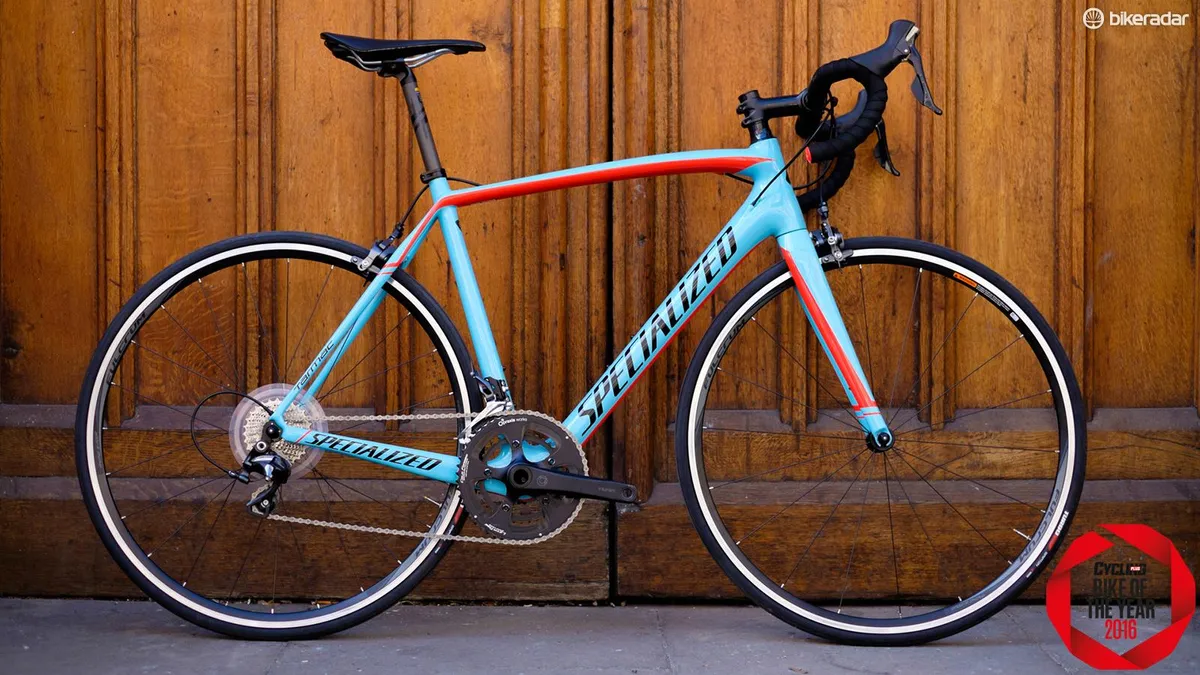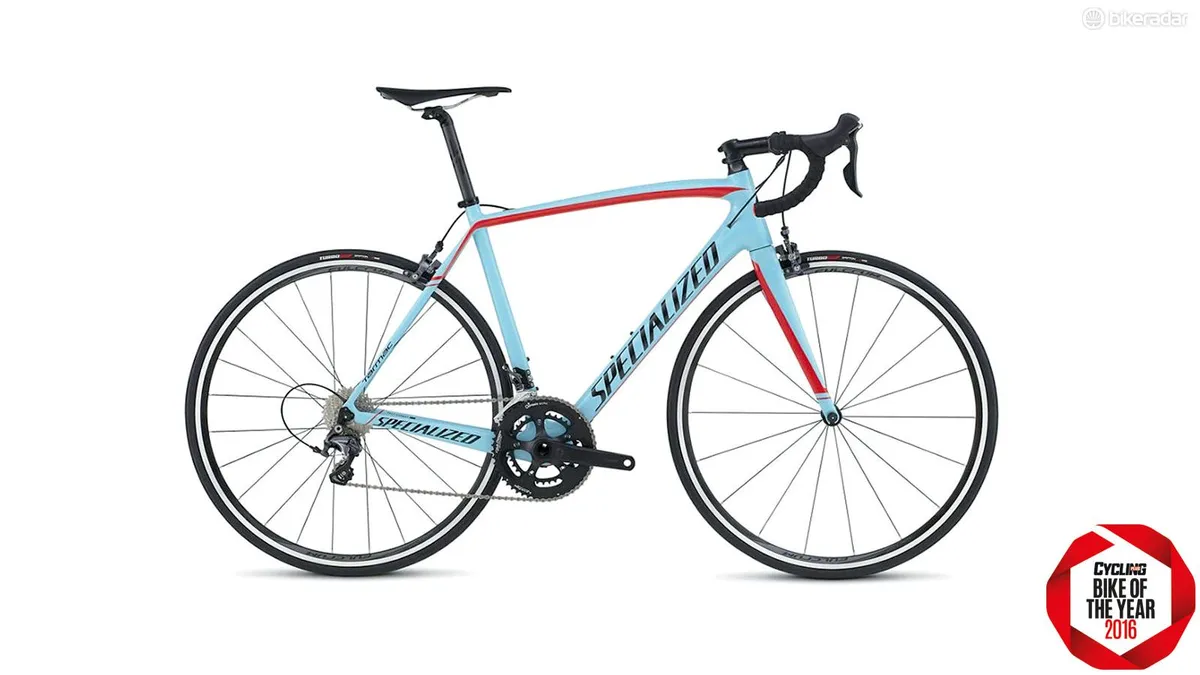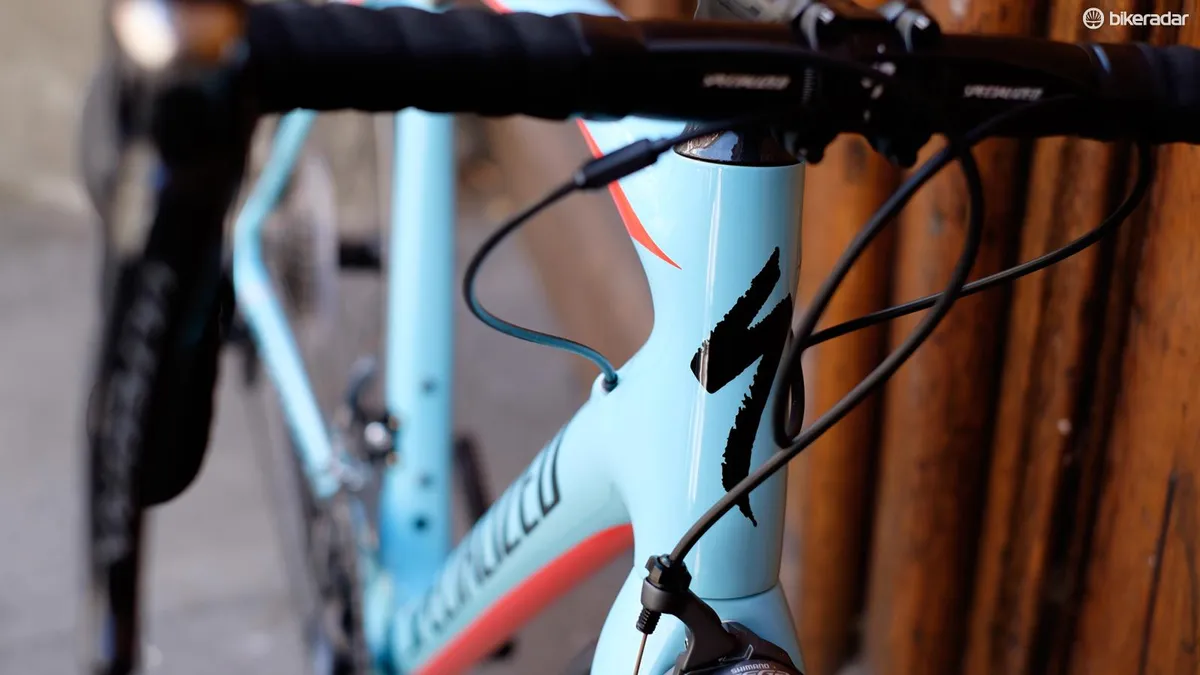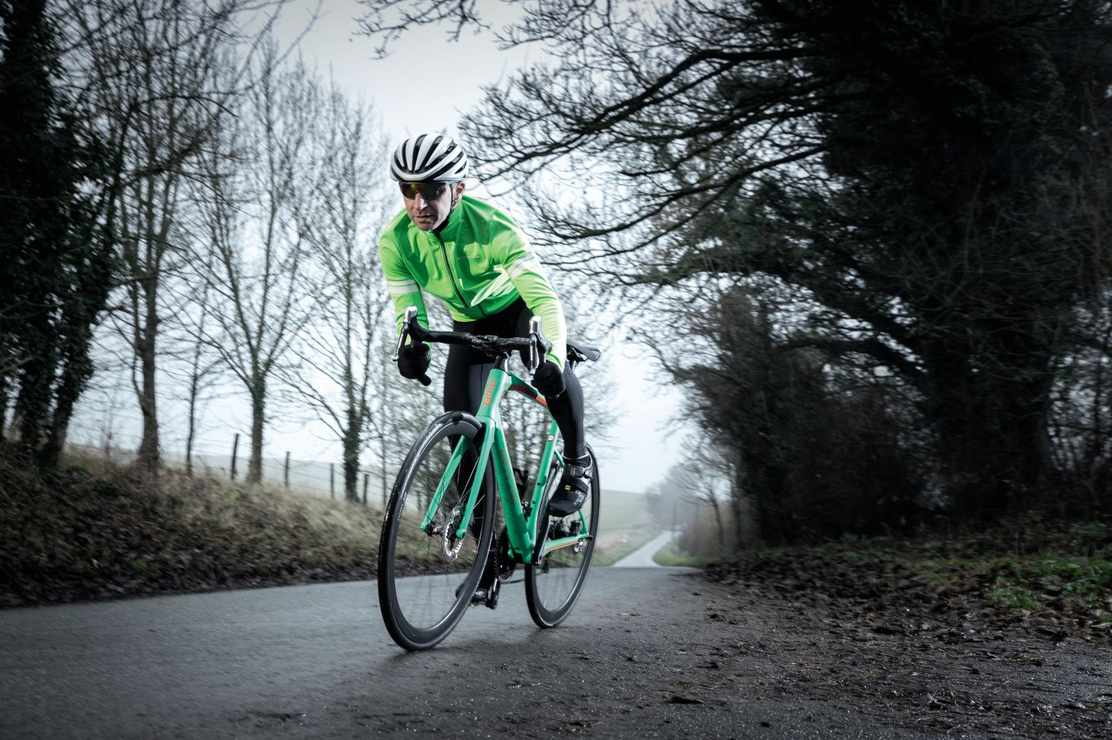The Tarmac is one of the most familiar looking bikes on the road due to its visibility beneath so many professional riders, and incarnations of the model will be found on every group ride. No surprise then that one of them found its way onto the longlist for our sister magazine Cycling Plus's 2016 Bike of the Year shootout.
- Specialized Tarmac range overview: all you need to know
- Specialized, SRAM auction eTap Tarmacs for World Bicycle Relief
Our FACT 9R carbon machine shares its frameset with one higher-specced Comp sibling, and follows Specialized’s recent trend towards strong colours with bold highlights, which means, aesthetically at least, we’re off to an outstanding start.
Curiously, the company say this custom colour is designed to naturally age over time, and exposure to prolonged direct sunlight will cause it to exhibit splashes of a dark rich colour, which is a deliberate design feature.
Race heritage
With its race-bred heritage, it’s no surprise to find a 16cm head tube on our 56cm example, making a very aggressive position easily possible. The 20mm tall conical spacer atop the head tube is initially limiting for those wanting to slam the stem, but it should be possible to replace it with a flat version.
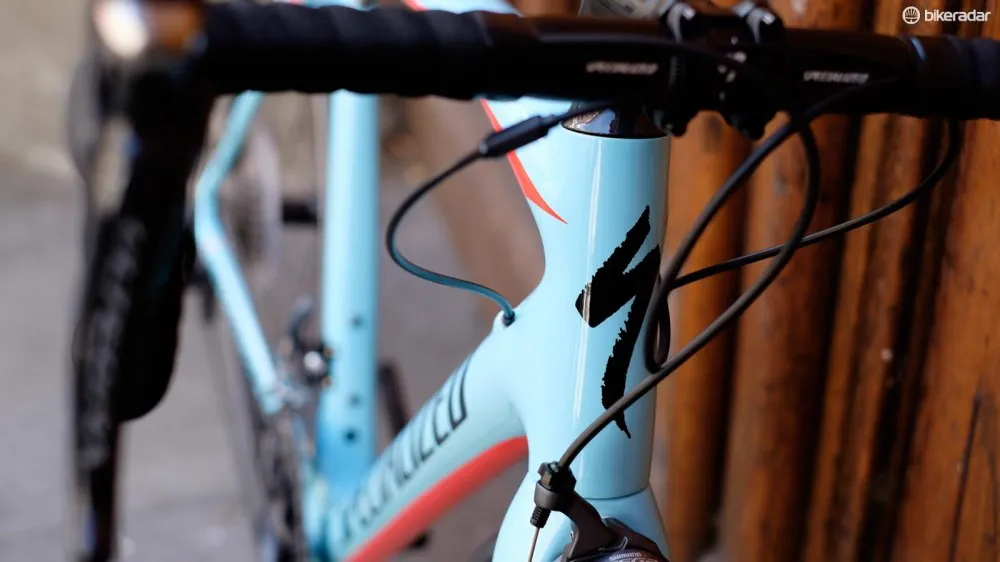
The 16cm head tube makes a slammed position easy to achieve
Specialized’s Comp Multi stem has an eccentric shim inside the steerer clamp, and rotating it 180 degrees either keeps the stem level or gives it a negative rise (AKA a dip, if you don't speak bike jargon), which is a boon for the flexible rider. We did find the position very slightly shorter than usual for this frame size, even with the saddle set right back, but swapping the stem would easily solve that.
The bike is decently specced for the price, but the frame clearly takes up much of the overall cost. The Shimano Ultegra groupset is only interrupted by the Praxis Works Turn Zayante M30 hollow-forged chainset and Leva Time cold forged rings, plus matching external cup BB30 bottom bracket. These are no cost-saving shortcut, as we’ve found them to perform superbly well, with competitive weight and great durability. They don’t match Ultegra’s grey anodising perfectly, but look smart and suit the bike.
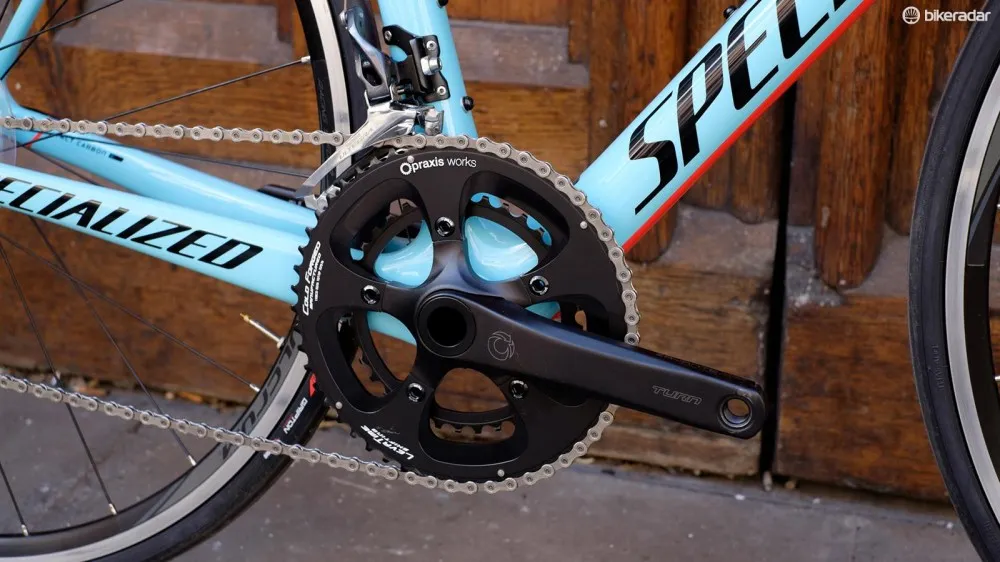
Praxis' Turn Zayante cranks have been praised in the past by BikeRadar's testers
Specialized provide a decent ergonomic bar and 27.2mm carbon seatpost, and the frame’s semi-compact style leaves a reasonable amount of it exposed, which equals more seated comfort. Split saddles are a very personal choice, you either like them or you don’t, but the Toupe manages to be supportive and far more comfortable than its minimal structure looks, although the Cr-Mo rails do add a few grams.
Nimble performer held back slightly by wheels
On the road, it’s soon obvious how well the Tarmac corners. Changes of direction are both instant and incredibly composed, and no matter how sudden the bar flick, the bike remains unflustered, and carves turns like a slalom skier. Rising out of the saddle, the first thing that strikes us is how broad the top tube is before meeting the head tube, as it takes some adjustment to not always rub your knees on it when climbing.
Next is the frame’s torsional rigidity, which is especially noticeable from the front end and bottom bracket area. Whether driving out of a slow corner or stamping on it for the town sign sprint, you can feel your energy driving the bike forwards.
Unfortunately not all of it finds its way to the road, as the Fulcrum wheelset seems to absorb some along the way. The Racing S-Four wheels are a conventional 21mm wide and 24mm tall, with straight-pull spokes in Fulcrum’s trademark 2:1 ratio at the rear.
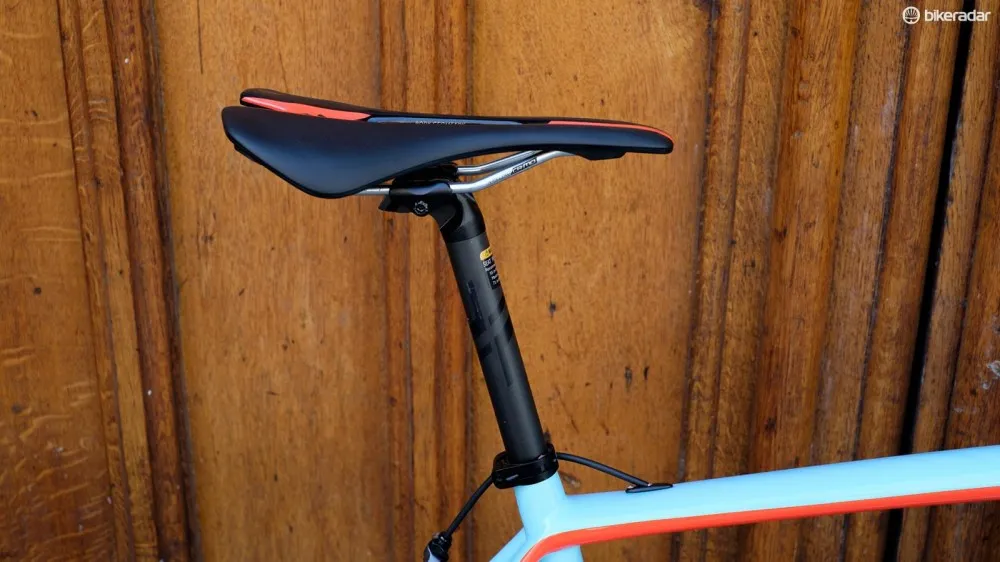
Not everyone gets on with split saddles, but Specialized's Toupe is comfier than it looks
For a progressive and often groundbreaking American bike company, specifying 23mm tyres when much of the industry, and the racers who Specialized supports heavily, are turning to 25mm as standard is a surprise. The Turbo Pro rubber does perform well, feeling grippy and swift, but fitting wider rolling stock is the way ahead.
Even so, it’s no slouch when pressed, accelerating rapidly, remaining solid under hard braking and cornering, and proving a fine way to cover ground in a hurry, but we were always aware that it could be so much faster with a wheel swap. The Ultegra drivetrain is slick, with a classy feel, great brakes and both the crankset and rings integrate faultlessy.
The Tarmac’s ride quality has been well refined over the years, and it shows, capably riding the rough stuff without transmitting more than a ripple to your contact points. Overall ride comfort is great, and in supplied form this bike is very competent, if not electrifyingly exciting.
It’s fairly competitive nonetheless, although Specialized could have been more aggressive in value terms. But to exploit its potential, a wheel upgrade is essential, increasing outlay further.
Also consider:
Lapierre Xelius SL 600
It's a pro-approved frame with a smart selection of components bolted to it, it looks great, and the ride is excellent. Read our full Lapierre Xelius SL 600 review.
BMC Teammachine SLR02 105
Some bikes are responsive, but the SLR02 is borderline telepathic. If every you want a demonstration, just stand on the pedals, anywhere. Read our full BMC Teammachine SLR02 105 review.
Vitus Vitesse Evo
Rolling on a pro-level carbon frame, this is a fun bike to ride quickly and this racy personality makes for pleasant ascending too. Read our full Vitus Vitesse Evo review.
Bike of the year 2016: top 3 best bikes £1500-2000
